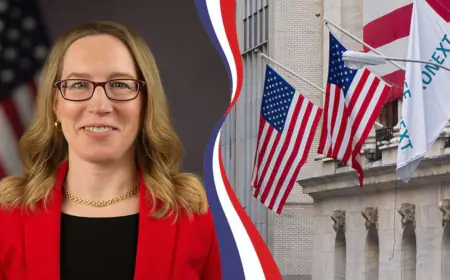Fiscal watchdogs sound budget alarm for St. Paul, noting high taxes, business loss, slower growth
The wide-ranging, 18-page In$ight Report takes a dim view of increasing city spending on new parks projects.

A coalition of self-described fiscal watchdogs has released a wide-ranging, 18-page report intended to raise alarm about the state of St. Paul’s finances and fiscal outlook, from rising property taxes to a shrinking downtown tax base.
The report — authored in part by a former city council member, a developer and former city budget director — discourages the city from investing in new parks initiatives such as the proposed Mississippi River Balcony, the Mississippi Learning Center or a regional multi-sport athletic complex until the city can “right the ship,” prioritize basic maintenance of parks, streets and sidewalks, and wean itself away from supporting projects through tax incentives to developers known as “TIF,” or tax increment financing districts.
“If we don’t have enough money to maintain our parks facilities, why are we putting in the budget more money to build new facilities?” said Gregory Blees, who served as a city budget director in the 1980s under then-Mayor George Latimer and later as a city council financial analyst. “That’s a major frustration with our whole committee.”
Given the city’s rising debt load, the “In$ight St. Paul” report warns the city could jeopardize its coveted AAA bond rating. That would make it more difficult and pricier to borrow funds to pay for major construction. That could lead to homeowners and other property owners paying even higher taxes to keep up with higher interest rates. St. Paul’s effective property tax rate for median-value homes — 1.39% of estimated market value — is already the highest of all of Minnesota’s 20 regions, and the sales tax rate, 9.875%, is the highest in the state.
During 2020 to 2023, St. Paul was the only one of Minnesota’s five largest cities to lose population. At least two major private employers located downtown announced this year they would leave the city.
‘Really good public education’
The city tax levy grew 101% from 2015 to 2024, while the Minneapolis levy grew 64% in the same period, according to the report. Looking at a slightly different period, “city leaders did not help their constituents financially from 2016 to 2024, when the certified property tax levies increased 97.4%,” from $105.6 million to $208.5 million.
Part of the St. Paul tax levy increase, however, is offset by a reduction in the city’s “Right of Way” street maintenance fees, Blees acknowledged.
The report was shared Tuesday with St. Paul Mayor Melvin Carter’s office and members of the city council by In$ight committee co-chairs Jane Prince, a former city council member, and Gary Todd, who has been active in fighting the city’s plans for a new bikeway along Summit Avenue.
“I think the biggest value of it is it’s really good public education,” said Prince on Tuesday. “It’s information that is rarely all available in one place. … According to our findings, we have the highest property tax and highest sales tax in the state. We’re the capital city. Isn’t there some way in which the state should be assisting with some of this? It’s looking at our finances at a time when we’re facing a lot of challenges in the city.”
Other members of the committee include Blees; Dave Beal, a former business columnist for the Pioneer Press; Julian Loscalzo, a lobbyist; John Mannillo, a developer and former mayoral candidate; Carl Michaud, a former environmental planner with the Metropolitan Council and assistant county administrator in Hennepin County; and public affairs consultant Donna Swanson, a recent executive director of the St. Paul Police Foundation.
Reached Tuesday, city council President Mitra Jalali said she had just received a copy of the report and would read through it. Jalali noted that the council is reviewing the mayor’s budget proposal for 2025 with city department leaders and many of the city’s financial challenges and opportunities would be of little surprise.
The mayor’s office noted Tuesday that the report references tax increases that do not account for two court decisions that shifted street maintenance costs from fees to the tax dollar-supported general fund.
While the city’s Office of Financial Services offered to “discuss corrections and inconsistencies on financial and other data in the draft report before it was released today, we did not hear back,” said the mayor’s office in a statement. The city council will host a public budget hearing later this fall.
Recommendations
Among some of the report’s recommendations:
• Establish a committee to advocate for more voluntary payments in lieu of property taxes from tax-exempt entities.
• Don’t approve Parks and Recreation design or construction funding this year or next for any facilities or park that doesn’t currently exist, including the East Side Community Center, Mississippi River Balcony, River Learning Center at Crosby Park, a multi-purpose regional athletic complex and new or enhanced water features citywide.
• Don’t approve sales tax bond issues until the city’s Office of Financial Services prepares a comprehensive bonding and debt service report.
• Don’t use long-term bonds to pay for police and fire public safety vehicles that have a short shelf life and will not survive the life of the bond issue.
22 research papers
The report, which relies on Blees’ 22 unpublished research papers culled from data from five government agencies, does not dwell at length on rent control or a Nov. 5 ballot question that would increase city property taxes to pay for municipal child care subsidies, but it takes a dim view of both.
The report acknowledges that many city practices — such as a heavy reliance on TIF districts for economic development — predate the Carter administration or the current city council, which has seven members, more than half of whom were elected last November. Still, the report notes that leaders are elected to confront problems, and they say freezing spending on major projects would be a start.
The In$ight report found that city government’s staff as measured by full-time equivalents — 2,924 positions in 2016 — would grow to 3,209 employees under the mayor’s proposed budget for 2025.
“Parks and Recreation is planning five new projects … without budgeting for the added expenses of servicing them,” reads the report, which questions whether the department has been setting aside enough money to maintain existing facilities.
Sales tax, projects, tax-exempt entities
A 20-year, 1% city sales tax approved by voters last November will be dedicated to reconstructing major arterial roads like Grand Avenue, as well as a variety of parks projects, but not toward fixing residential streets.
“The city has requested over $82 million in funding from the Minnesota Legislature for the River Balcony, Learning Center, and Athletic Complex along with $118 million for nine other capital bonding requests, even as we lack funding to maintain the (public amenities) we have,” reads the report.
Unique among Ramsey County cities, St. Paul spans many parks, schools, nonprofits, government buildings and other uses that rely on public services, such as streets and sidewalks, but are tax-exempt.
In all, 18.7% of property within the city — carrying $8 billion in property value, out of the $43.4 billion in total property value citywide — pays no property tax. That adds to the city’s fiscal pressures and could be addressed, according to the report, if the city demanded payments in lieu of taxes, a model utilized in Boston and other cities to recoup at least limited funds from non-taxable properties.
TIF, fiscal disparities program
The In$ight report examined “two complex municipal financing tools” — tax increment financing and the state’s fiscal disparities program. It found that St. Paul is the state’s biggest user of TIF, which allows developers to use money that would otherwise flow to public tax coffers to pay off their development loans for improvements to blighted property.
That TIF spending has increased 40% since 2015, from $31.6 million to $44.3 million in 2024, even as TIF obligations decreased more than 50% in Minneapolis, the state’s second-largest user of TIF, which captures $21.5 million of taxable value in its TIF districts.
The report urges St. Paul to better publicize how much of the city’s tax base is wrapped up in TIF, as Minneapolis does annually. “The city of St. Paul should have the same transparency,” reads the report.
The Met Council redistributes business property taxes from the seven-county metro area’s wealthiest cities to less wealthy municipalities through the fiscal disparities program, and St. Paul is the metro area’s leading beneficiary.
What's Your Reaction?









































































































